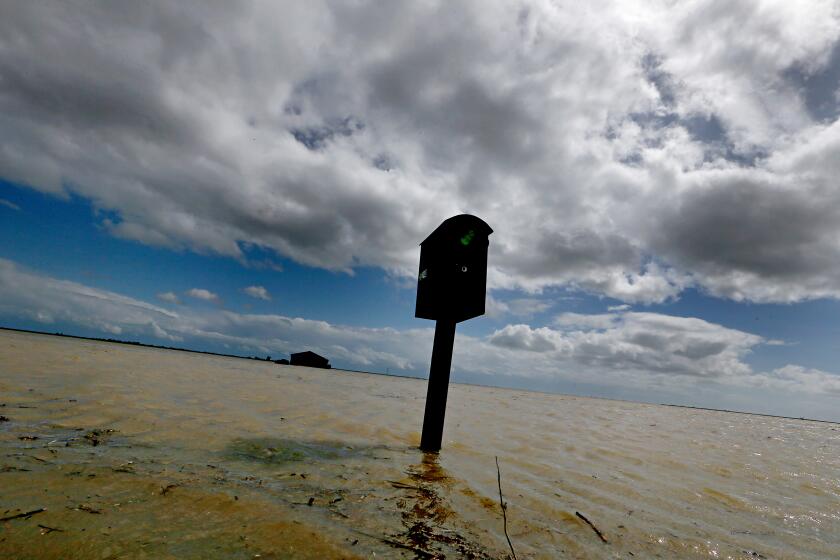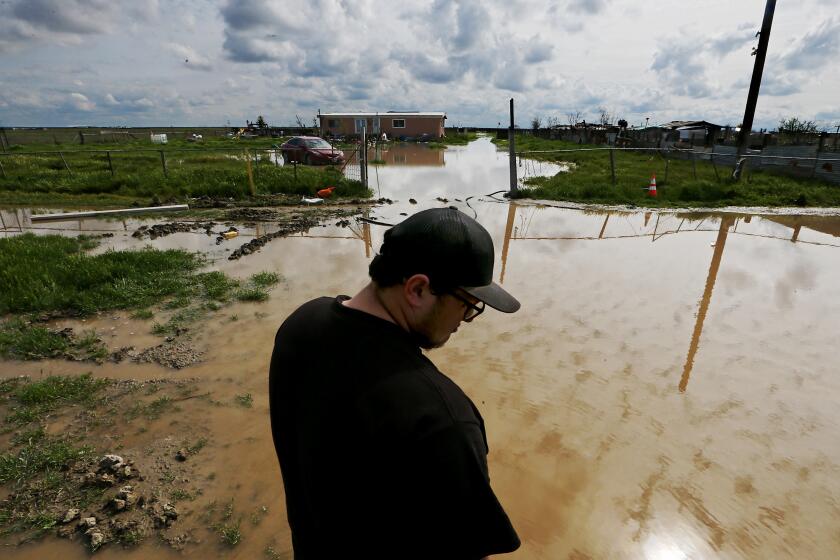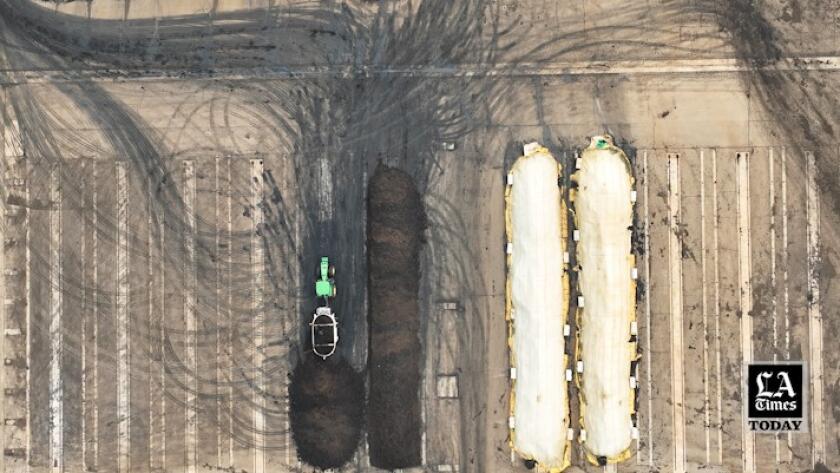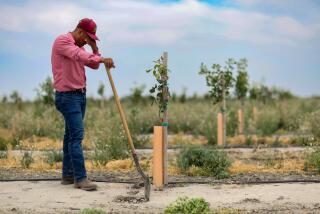Waste from manure lagoons and other potentially hazardous substances have already been released in Tulare Lake floodwaters. Videos are of flooded farm property in Corcoran, showing water from the lake breaching a roadside levee, and of Garces Highway and the flooded land near it. (Robert Gauthier / Los Angeles Times)
- Share via
KETTLEMAN CITY, Calif. — Here at the western edge of the Tulare Lake Basin dwells a smelly industrial site the size of 150 football fields. Roughly eight times a day, its operations are replenished with a truckload of human waste from the residents of Los Angeles County.
Since 2016, the Tulare Lake Compost facility has been converting Southland sewage sludge into high-grade organic fertilizer, and sparing L.A. County the bother of burying its waste in local landfills.
But as epic Sierra Nevada snowpack threatens to overwhelm this phantom lake bed with spring runoff — inundating a region that has already suffered flooding from a series of powerful storms — some fear the facility could be transformed into an environmental disaster.
“When the southwest corner of Tulare Lake floods, thousands of tons of L.A. County sewage sludge, containing toxic heavy metals, will become part of the mix in the newly formed lake,” said Tom Frantz, a retired schoolteacher and environmental activist who once lived in the area but moved to San Luis Obispo three years ago.
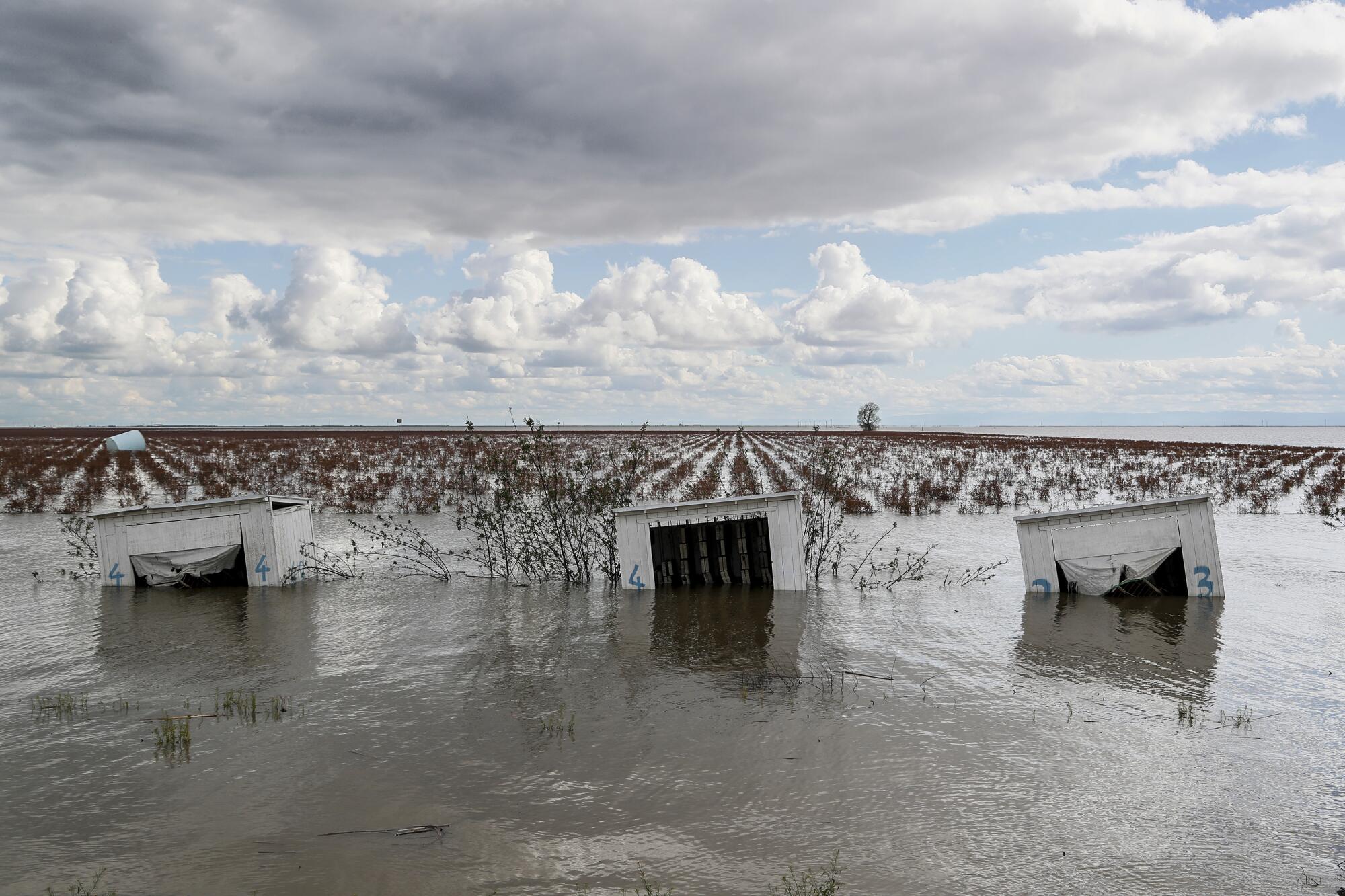
“You can’t grow food for humans where this waste has been spread,” Frantz said.
As historic storms fill once-dry Tulare Lake and submerge prime California farmland, tensions are building over how to handle the swiftly rising floodwaters.
Area water managers and government officials acknowledge that if Tulare Lake Compost were flooded, the resulting contamination could trickle into groundwater and contaminate streams and rivers throughout the region. An even bigger risk comes from scores of waste lagoons at nearby chicken and dairy ranches that dot the valley floor.
It’s for this reason that officials are now keeping a wary eye on levees and other structures that are designed to keep floodwaters from entering waste ponds.
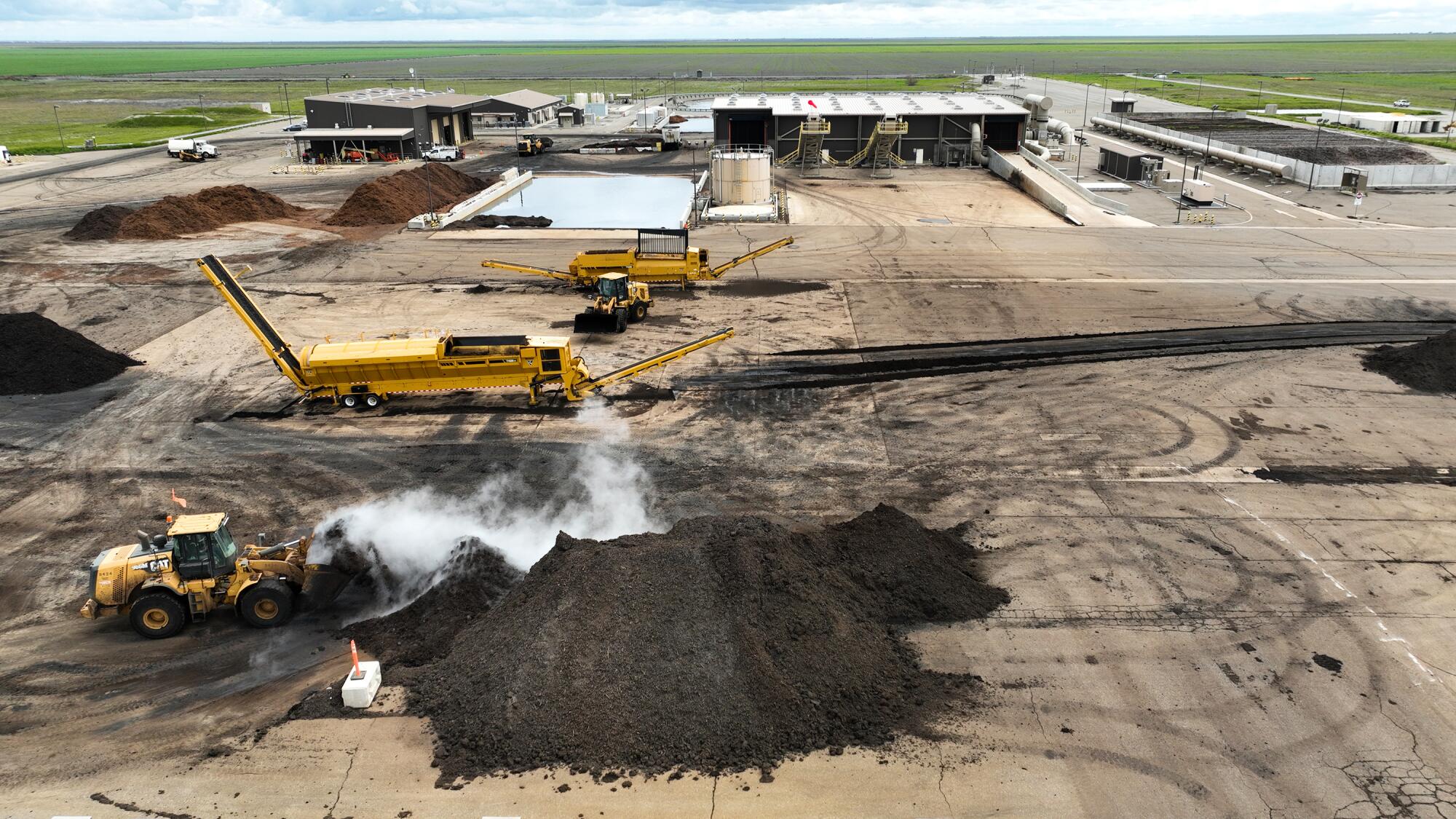
“We have seen it already driving around Tulare in the last few weeks,” said Angel Fernandez-Bou, a researcher with UC Merced’s Environmental Systems Graduate Group and a Western states senior climate scientist with the Union of Concerned Scientists. “Intensive cattle operations that are not careful about their waste had that waste spread beyond their properties, with nearby puddles of black water because of the waste,” he said.
“If floodwaters carrying cow waste arrive near vulnerable communities, it is very possible that domestic wells are contaminated with such pathogens as E. coli. That can make water immediately toxic unless their water system has a disinfection treatment,” he said.
During a recent visit to the sprawling L.A. County Sanitation facility in Kettleman City, the faint odor of ammonia hung in the air as site engineer Carl Glass described flood defenses.
“We designed this facility to withstand a 100-year, 24-hour storm,” Glass said. “In simple numbers, that flood was predicted to raise the water level, locally, by three and a half feet.”
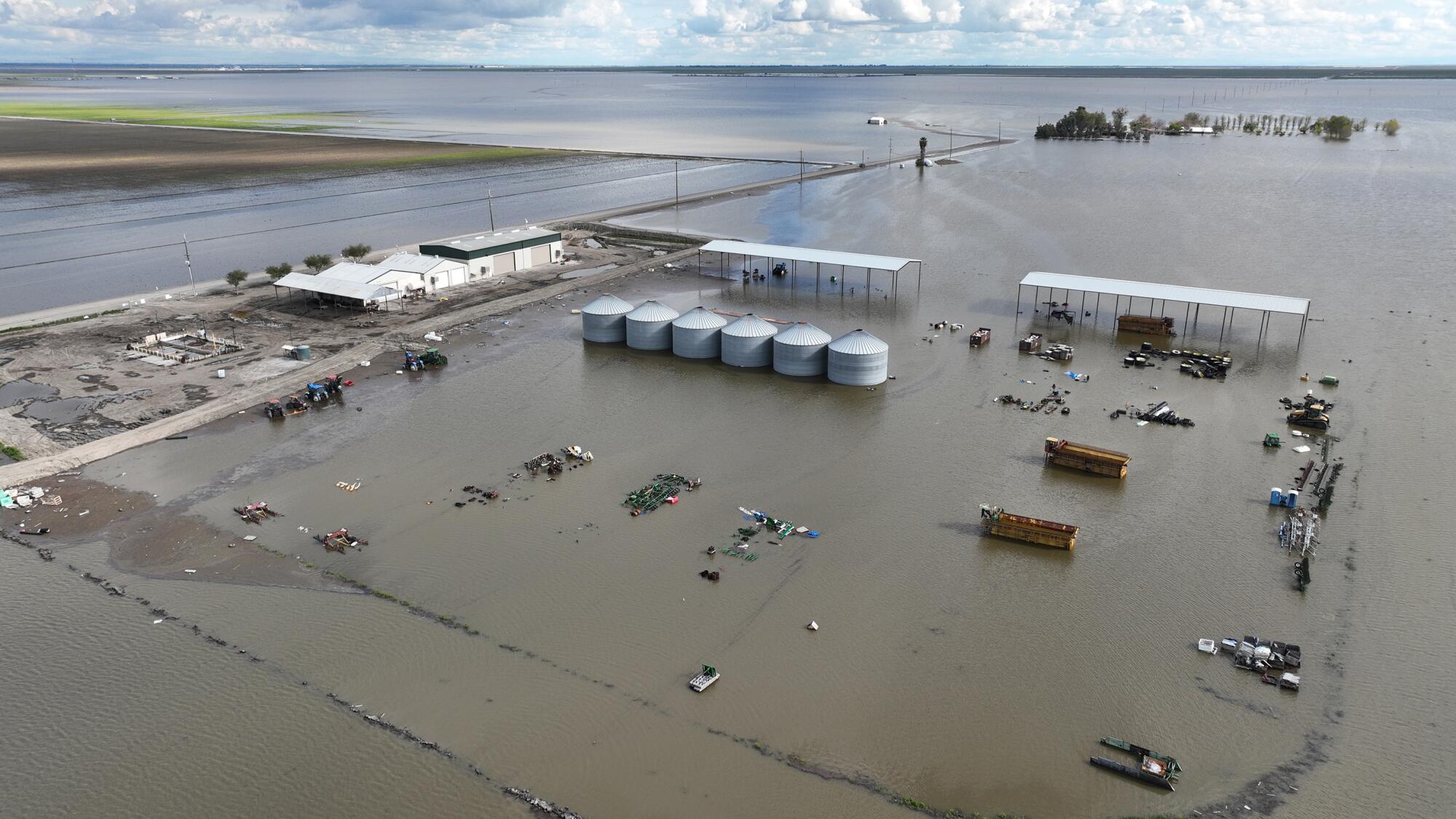
The site, however, sits 5 feet above native elevation and possesses three bermed stormwater basins lined with concrete to collect runoff from the facility. Four additional unlined basins are available to provide protection as well, Glass noted.
“Any water that falls on the site is captured and stays on site,” he said. Floods of the 1960s and ‘70s “didn’t come anywhere near” the facility or the surrounding acres of farmland, he said. Still, the facility is developing a flood protection plan, ordering sandbags and identifying critical infrastructure, Glass said, “since nobody knows what the melting of the snowpack is going to entail.”
A California town is engulfed in floodwater, but residents fear what will happen if they flee.
State and local officials are hopeful the region will be spared drastic flooding. If the spring stays cool, they say, and the snowpack in the mountains — which in some places is nearly 300% of its average depth — melts slowly, water managers are hoping they can get ahead of any major flooding.
“I think what we’re all hoping for at this point is that it melts gradually,” said Antoinette Serrato, a meteorologist with the National Weather Service in Hanford. “If it melts gradually, then most of the levees are designed to be able to hold that.”
However, “if it melts all at once or if it melts really quickly, that’s when we would maybe have” an issue, she said.
Once the largest body of freshwater west of the Mississippi, Tulare Lake was drained — its waters siphoned and diverted by farmers — at the end of the 19th century. Where once a wetland of reeds, birds, fish and amphibians thrived, there are now dairy farms, human waste sites and farm fields operating on the bottom of the desiccated lake.
But a series of winter storms has already started refilling the lake, which straddles Kings and Tulare counties, causing residents to evacuate and flooding croplands and ranches.
Officials in both counties say they are bracing for the worst.
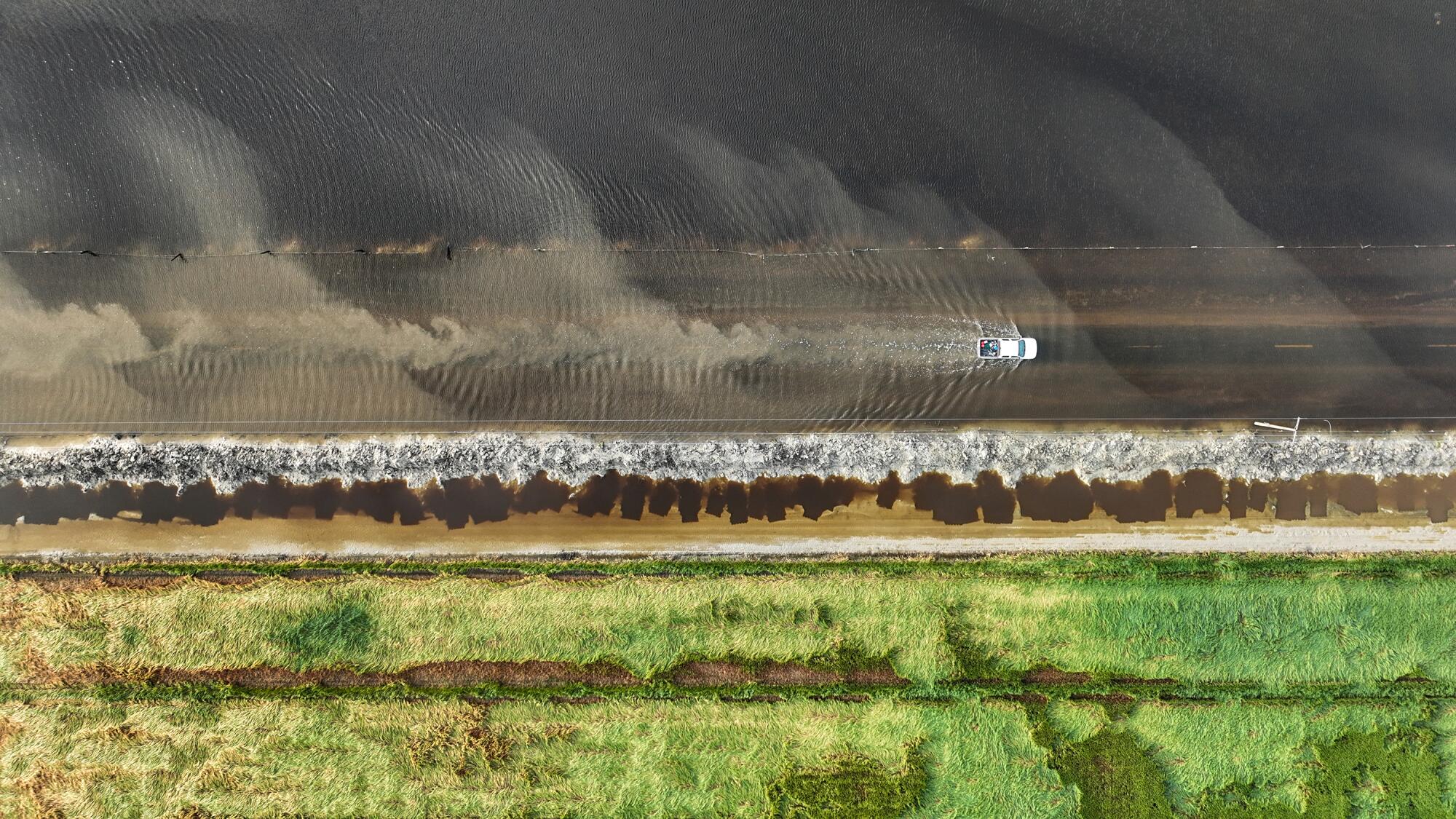
“We’re actively preplanning our [California Department of Forestry and Fire Protection] crews along with our law enforcement,” said Carrie Montero, public information officer for Tulare County. She said the county is working with state and federal agencies “to shore up and do as much fixes of the levees and the channel systems” as it can before the melt.
Local irrigation and flood districts — the messy network of private landowners that oversees much of the levee system in the area — are also “actively cleaning out debris, rebuilding and repairing levees, and raising levees in preparation for the incoming” water, she said.
Doug Verboon, a Kings County supervisor, said he has been working closely with Tulare Lake Compost amid larger flood preparations.
“We’re gonna hope the snow doesn’t come till the end of May, first of June,” Verboon said. “We need to fix a lot of levees and prepare for that ... we need to prepare for all the snowmelt because we got so much snow up the hills. We might not be able to handle it, but we’re doing our best.”
Bryan Langpap, spokesman for the compost site, said he is confident it won’t flood.
“I think where we have concern down the road is later in the spring when it starts to really warm up and the snow starts to melt,” he said. “What happens then? I think at this point we don’t know. I think at this point it’s speculation to consider how quickly it runs off or what the flow levels are.”
He said, in any case, the compost is cooked at a high temperature to kill pathogens such as bacteria and viruses.
“The thing you may not realize is that the compost that we produce at our site is called exceptional quality compost,” he said. It is “compost that’s so clean it can be used to grow any crop. … So there’s not hazardous material there.”
Clay Rodgers, assistant executive officer at the Central Valley Regional Water Quality Control Board, agreed.
“If the material is composted, then we don’t have the bacteriological issues because that’s what the composting does — it kills the bacteria,” he said. So “while they are a significant concern of ours, probably not quite as much as some of the dairies or even poultry facilities that we have in the valley.”
There are 340 dairies in Kings and Tulare counties, according to Michael Payne, a researcher and outreach coordinator at the UC Davis School of Veterinary Medicine’s Western Institute of Food Safety and Security, many of which collect and hold manure in lagoons and ponds that is then converted into compost for nearby fields.
Michael Claiborne, directing attorney for Leadership Counsel for Justice and Accountability, said if floodwaters wash away manure lagoons, there is concern that nitrates could seep into groundwater.
The historical lake bed is surrounded by multiple communities, he said, noting Allensworth, Stratford and Corcoran. “They’re all reliant on groundwater for their drinking water supplies. So if you end up moving that dairy manure and the floodwaters toward those groundwater wells, you might have a really significant problem as that nitrate seeps into the soil and into the groundwater.”
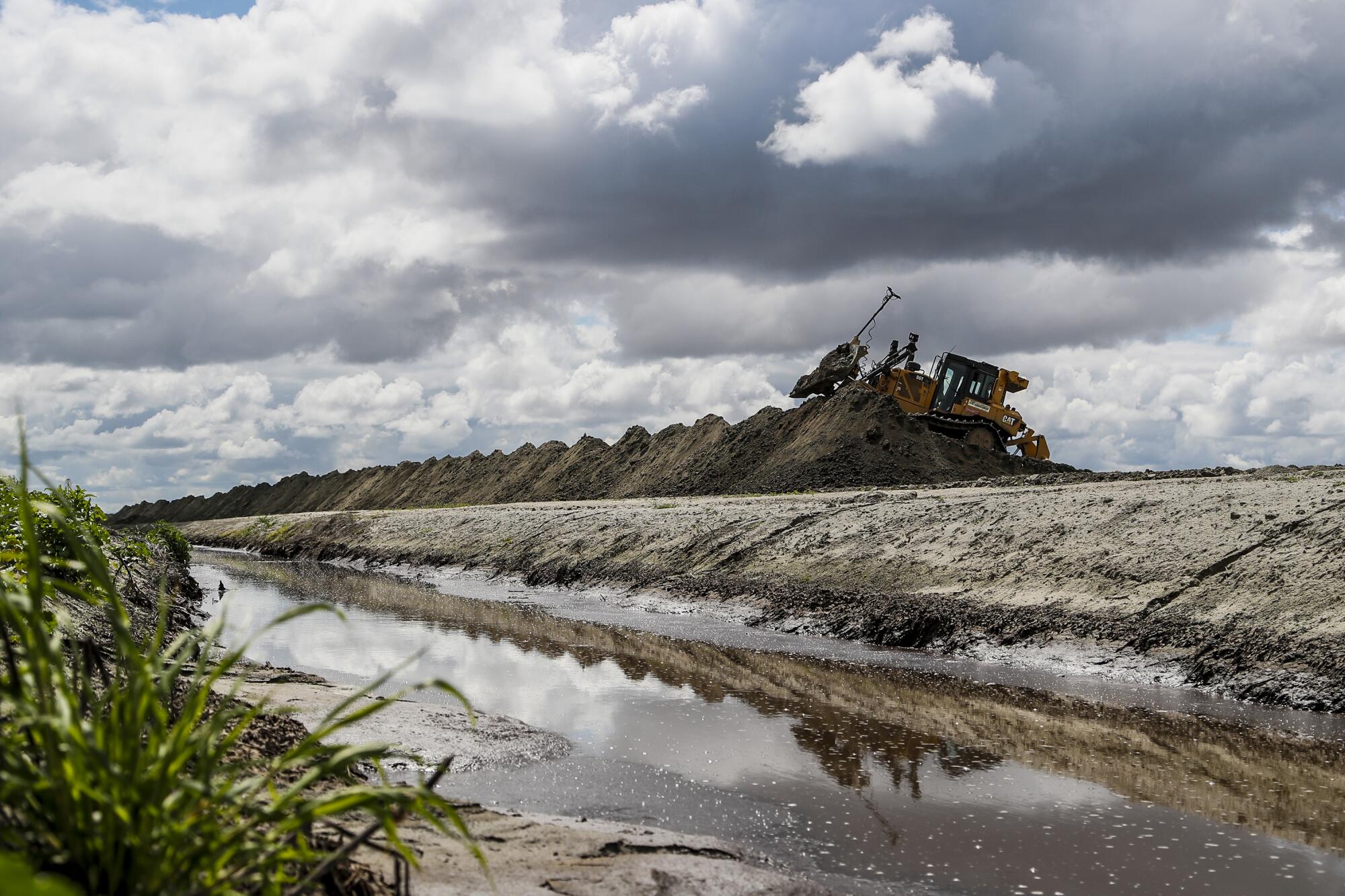
But state water managers say if the fields and farms of the lake bed do flood, there is so much water moving through the system that any toxic chemicals or contaminants will be diluted and unlikely to pose much harm.
“Dilution is the solution,” Rodgers said, adding that his agency is tracking the flooding via satellite — in many cases, they are unable to get in because of flooded roads.
“Probably the greatest threat we see is to surface water,” he said. While some surface water is used for drinking water, he said, most of that supply comes from groundwater in the area.
But the surface water is where people play.
“Granted this time of year, with the cool temperatures … we don’t have children out swimming in the creeks or families going down for a picnic and getting in the water,” he said.
“But that’s what our standards are designed to protect” — municipal supplies and recreational activities, as well as the fish “and other animals that depend upon that water.”
- Share via
Watch L.A. Times Today at 7 p.m. on Spectrum News 1 on Channel 1 or live stream on the Spectrum News App. Palos Verdes Peninsula and Orange County viewers can watch on Cox Systems on channel 99.
